- Home
- Stephen Hunter
Game of Snipers Page 2
Game of Snipers Read online
Page 2
“Mrs. McDowell, this ain’t healthy. Not only because what you describe is murder, not war, not only because it could get you into a whole peck of trouble that would make where you are now seem like kindergarten, not only because no matter how it came out you’d end up spending all your money—and I mean all of it—on lawyers and various other forms of predators, not only because it’s probably not even possible, and, finally, if you’re trying to get me to go on some kind of revenge safari for you, I am too old, at seventy-two, and lack any wherewithal for door-busting, stair-climbing, and the stalking part of sniping and would only get myself killed or arrested.”
She nodded.
“That is entirely sensible,” she said. “The people who would talk about Bob the Nailer said he was a decent man and would not steer me wrong, and he would give me solid advice. And, for the record, nobody in the marine community or the shooting community or the intelligence community—and I have entered them all—has encouraged me. They think it’s crazy.”
“I would not use such a harsh word. Let’s leave it at ‘bad idea.’”
“But—” she said.
“There’s always a ‘but,’” he said.
“Yes, and here’s mine. You can say it was war, that’s all. He joined the Marine Corps of his own volition, he signed on to sniper school, he went to war willingly, he had a few kills of his own, and one night his number came up. Numbers come up, that’s what war is about. But I’m not telling you anything you don’t know. And the boy who pulled the trigger, the argument would run, he was just another boy like Tom, dancing to a politician’s tune for policy goals that never made any sense, and, just like Tom, he’d rather have been at the mall or the movies, hanging out with girls, whatever. Is that it?”
“That would be the argument I’d make, yes. No peace in it, no justice either. The chances are also that that boy never made it out of Baghdad himself. There was a lot of killing there in 2003, if memory serves.”
“There was.”
“If I recall correctly, for a while they had a very effective sniper program, and our kids died at a significant rate. Some folks went over there, analyzed the data, made charts, and figured out where, when, and how these shots were being made, and designed new strategies. So our dying went way down, theirs went way up. I guess Tom went down before the experts figured it out.”
“That’s it exactly.”
“Shouldn’t you be mad at the Marine Corps for being so slow to get it figured out? Or at the president and the long line of men in gray suits who put your son where he was when he got taken? What about the newspapers that wrote editorials in support? That might be a way to channel your rage. Another way might be to see that those that died, in fact died for something, even if it was only to become part of a countersniper database, which ultimately saved a lot of mothers from feeling what Tom’s mom feels. It meant something. It was a sacrifice not for nothing but for the betterment of all those who came after.”
“I suppose I could feel that. But I don’t. There’s that ‘but’ again.”
“All right. Tell me about this particular ‘but.’”
“But it wasn’t a part of the war. But it wasn’t another kid who wanted to be at the mall. But it wasn’t even an Iraqi. But he’s not dead. But I know who he is and where he is.”
It was a tale full of sound and fury. What it signified was as yet unknown. Only one thing was clear: it was told by a woman who was either insanely brave or insanely insane—maybe both.
She had been to Baghdad seven times. She had been raped four times and beaten three, once severely, which explained the somewhat odd shape of her face.
“The bones didn’t heal properly,” she said. “Big deal. Who cares?”
Three times she’d been bilked by fast operators. She’d used up the money she’d made selling her house on those. She borrowed money from her brother to pay for a six-month immersion course in Arabic.
“It’s not like I can follow the nuances, because you know it’s very fast, and so much depends on context or prior knowledge. But I can pretty much stay with it, I can negotiate, I can double-check, I can follow. Oh, and I became Moslem.”
“You became Moslem?”
“I had to understand him. You can’t do that from the outside, not really. So I gave myself another six months to convert, to really try and become Islamic, to understand it in history and culture and ideology and fervor of faith. I even experimented with the idea of blowing up some infidels just to see how it felt, but, crazy as I am, even I saw how wrong that would have been.”
The story, so far. Tom’s battalion intelligence officer had told her that the men opposing 3/8 in that sector of Baghdad were thought to be refugees from the 2nd Armored Assault Brigade of the 5th Baghdad Mechanized Division of the 1st Republican Guard Corps. Crack troops who melted back into society after the end of the war, mostly from the capital city themselves, so they knew it pretty well. They came together on a strictly ad hoc basis in the southeast sector of the city, where 3/8 had been placed, and began guerrilla operations against the infidel invaders. At first, it wasn’t much: the odd IED, the bungled ambush, the sniper who missed, the constant betrayals, setbacks, mistakes, and sheer incompetence. But they learned fast.
So her first trip—and her second and even half of her third—was to find a veteran of that unit and of that campaign who would talk. Many false leads, much money stolen, many blind alleys in which, at least for the first time, the rape occurred.
Swagger had an image of this middle-class suburban American mom gone native in Baghdad, swaddled in the robes of the believers, knowing that at any moment she could be found out and be raped, beaten, or even murdered, at the same time being hunted by the alliance policemen who must have known she was there. She made mistakes, she got caught, she paid the price over and over, but somehow she kept on. Nothing scared her more than her son’s death going unpaid for.
Finally, she met a man, an ex-captain in the 2nd, now crippled by a gunship chain gun, and needy of money to support wife and family, and, as well, angry at the leadership that had led him to this sorry, provisional life.
“Assiz”—his name—knew. Knew something. Maybe not enough, maybe not all, but something. He told her of the outsider.
“He was from elsewhere,” Assiz told her, and didn’t take money for it. “Brigade Command brought him in. He was said to be skilled with a rifle. We were canvassed for our best shots. I lost two excellent gunners from my IED team. They went off—where, I do not know. Someplace safe, where they could learn to shoot the rifle, not the AK but the other one, the sniper rifle.”
She went on. When the men returned—there were just twenty-two of them—they were equipped with the Russian sniper rifle, the Dragunov. The sniper had a program, he scouted with them, he organized their escape routes, he was very professional. He had tricks they had not seen. A bomb would drive the marines back, under cover to all—save the sniper, who knew where they had to go, who had measured the distances, knew the adjustments, practiced the shots. The marines took refuge, unknowingly, in a kill box. The sniper fired quickly, taking as many as he could, but departed before organized return fire and maneuver elements came into play. The sniper killed and went to ground.
“He was an old hand,” said Bob. “He knew a thing or two.”
“Tommy was on perimeter overwatch. I’m told he had a premonition. He was on the roof of an apartment block, which 3/8 had taken as patrol headquarters. His job was to look for snipers through his scope. He moved positions every few minutes, a few feet one way or the other. If you stayed too long in one place, they might see you and zero you. But—”
“I know this is hard.”
“But whoever the man with the Dragunov was, he was ahead of the curve. He knew where Tommy had to be. He set himself up where he had a narrow angle to target, knowing that, sooner or later, Tommy would have to occupy that position. The rifle sco
pe was preadjusted to the range, and the sniper himself showed superb discipline. He didn’t move a muscle in his hide, he just lay there, locked into the rifle, waiting, waiting, waiting until somebody took up the position in his zero, and when Tommy did, the shot was almost immediate. It was the headshot. Instantly fatal. Huge exit wound, though the hole in the face, just under the off eye, simply looked like a little black dime. Then nothing. There was a bounty on marine snipers, so whoever fired got a nice bonus that night. Maybe the Bossman took the shot, maybe he paid himself a bonus, maybe he kicked it into a fund for the party—I don’t know. Again, it doesn’t matter. He set it up, he made it happen, he entered their war and taught them things they were incapable of doing on their own. It was his training, his program, his planning, his initiative, that killed Tommy. It wasn’t his country, right or wrong. It was this other thing: jihadi. He’s the one that has to pay, and he’s the one who authored that two-month surge in deaths where the casualty rate went from 2.4 per thousand to 9.6. Total kills for those two months was over two hundred and forty-five, with another fifty or so wounded.”
“I’m surprised there were so few wounded. Usually, it skews the other direction, with a ten-to-one ratio of WIA to KIA. He must have trained them to shoot for center mass and wasn’t interested in simple out-of-actions.”
“According to my Captain Assiz, he had no use for that. The Qur’an says slay the infidel, not wound him, and he believed in it totally.”
The story continued. The Corps brought in a countersniper intelligence team that applied special analytical skills to the problem and realized that the snipers always shot to pattern. The lack of improvisational skills again. Nothing left to chance. Do it by the program. They operated between 1600 and 1800, usually used cars for cover, the streets littered with wrecked and burnt-out vehicles, and fell back on a straight line to the nearest available building, where shelter had been prepared.
“Tommy was dead by then,” said his mother. “It was too late. But on a certain day, the snipers went out early and placed themselves according to the doctrine. As soon as four o’clock came, every abandoned car on every company or battalion perimeter in Baghdad was taken out by TOW missiles, the wreckage sprayed with SAW fire, followed by grenades. Of the twenty-two, the Iraqi resistance lost seventeen that day. The snipers were never a problem after that.”
“What happened to Bossman?”
“He vanished. He knew the tables had turned and that his program was now defunct. He’d done the best he could, but the game of snipers was over, and it was time to go on a nice vacation and begin to recover to fight another day in a war that’s fourteen hundred years old.”
“But his usefulness wasn’t quite finished, if I’m not mistaken,” said Bob. “After he was gone, the fighters put together a propaganda video. He became famous. Everyone feared him. The exploits of the twenty-two snipers were all attributed to one. It was said he killed hundreds of Americans. He was given a name, and the name was marketed. Great marketing, by the way. Madison Avenue quality all the way.”
“You know the name, then.”
“I heard it. He was called Juba the Sniper.”
* * *
• • •
Darkness came. Julie arrived home from her office in town, from which she ran the Swagger empire of layup barns, and met Janet McDowell, and the two immediately bonded. Janet came easily out of her manhunter personality and warmed to Julie, who insisted she stay for dinner. Janet went with Julie into the kitchen, and the two worked quite happily together.
After dinner—a good time—Bob and Janet returned to the porch. It was time for the rest of the story.
“After he’d fled Baghdad, you lost him. How’d you pick him up again?”
She’d tried everything. More trips to the capital city after Bush’s surge finally quieted things down, trips to Moscow to bribe her way into KGB files and see if the Russians had any contact or training with Juba, a trip to Chechnya to see if he was one of the notorious Chechen snipers, so ruthless and cruel to the Russians during that little war. Afghanistan revealed some possibles: an American colonel, highest-ranking officer to fall to a sniper off an exceedingly long shot—that seemed to suggest a much higher degree of skill than normal. The same on a senior CIA operative in Helmand Province. Using her son’s death as an entrée, she met many marine snipers and intelligence officers, searching for hard leads. But everything was soft, a vague possibility, not proof.
“I almost gave up,” she said. Left unsaid: if she had nothing to live for, what would be the point?
But then she thought: What don’t I know? I don’t know the instrumentality. Perhaps that’s the key.
The rifles. She immersed herself in them, beginning with gun magazines, reading seven a month to familiarize herself. She read sniper memoirs, sniper fiction, saw sniper movies. She caught the upsurge in sniper as hero that pop culture suddenly embraced and followed the careers of Chris Kyle and other celebrity snipers. She learned ballistics, she studied rifles, she took shooting lessons . . .
“My son’s father—we divorced when he was three—gave me two hundred thousand dollars. So I was able to keep going, though I am running out of relatives to pay for all this.”
At a certain point, she decided to concentrate on the specific weapon. Juba and his team, according to every marine intelligence officer she talked to, had used the classic Dragunov, Russian-manufactured, and an issue weapon for close to fifty years. The marines knew it well. It had opposed them all over the world, and they’d been able to recover one in 1973 with CIA assistance.
“I’ve heard the story,” said Bob.
“But the key wasn’t the rifle. It was the ammunition.”
“Good insight,” said Bob.
“I never would have understood that. I thought you just put what I called a bullet into what I called a gun and pulled the trigger and that was that. But that wasn’t even the half of it. Not even a tenth. So much to learn. I learned most of it.”
The woman was determined. Nothing stopped her, not even the labyrinths of technical detail, shooting culture with its nuances, its contradictions, its loads of false information, its arbitrary names for things that made no sense and just had to be memorized.
“It turns out the most accurate 7.62×54R ammunition in the world was manufactured by the Bulgarian Arsenal AD in the ’50s. It’s called heavy ball, and it has a yellow tip. It ships in metal cans of three hundred rounds and has corrosive primers, so the sniper has to keep his barrel clean. I reasoned that Juba would always have heavy ball on hand.”
“That’s good,” said Swagger, who had hoarded American .308 Match Target from Frankford Arsenal during his time in operations. You wanted the best. You had to shoot with gear and ammunition you trusted with your life, because you were trusting it with your life.
“So I reasoned that after he left Baghdad, he’d continue to have need for the ammunition, because in any further endeavors he’d need it. So I had to know: where do you get Bulgarian 7.62×54 heavy ball?”
“Next stop: Bulgaria?”
“Yes. It turned out that it was no longer being manufactured, and even when it had been, it wasn’t turned out in mass quantities. Not in the tens of millions, but in the low millions. It was a slower process because the tolerances in the loading dies were tighter, the inspection of rounds more intensive.”
In Sofia, she met a man who knew a man, and, twenty-five thousand dollars later, she was in the government archives, going through bills of lading for the heavy ball. It had been declared surplus in 1962 and spent the next twenty years in a warehouse. When the Russians moved into Afghanistan, their snipers quickly discovered how good it was, and the bulk of shipments went to the Russian army. It killed a lot of mujahideen there, and more in Chechnya. But by the new mandates of capitalism, the leftover ammunition—maybe ten million rounds—was exported to a variety of countries where the 7.62×54
was shot, mostly countries that had imported large quantities of the Mosin–Nagant, the Soviet/tsarist twentieth-century bolt-action battle rifle of the same caliber. It was a great Mosin round. So it ended up that the largest for-sale accumulation of Bulgarian heavy ball was an importer in Elizabethtown, South Africa, called SouthStar.
“You went there.”
“Yes. Helpfully, it’s another country where everything is for sale. After a few false starts, I gained entry to SouthStar’s shipping and inventory records, for a single evening.”
She reached into her briefcase and pulled out a computer printout.
It was a huge thing and it must have taken hours to master. But she’d gone over it before and certain shipments were annotated over the long years of SouthStar disbursement of the metal boxes, with their yellow dots painted on the sides to signify the superiority of the round.
It seemed that once every three months, five thousand rounds were shipped to certain spots in the world, mostly the Middle East. For a number of years, the destination was Egypt. For another couple, it was Iraq. Eventually, the printout put the recipient in southern Syria.
“The payment was always the same: money wired from the same Swiss bank. The last shipment shows he’s still in southern Syria, far from the war.”
“You think that’s him?”
“I do. The trouble with ammunition is that it’s so heavy by density. Which means he can’t order a million rounds and be done with it. He’s got to get a small, manageable amount every few months. If he’s going to stay sharp, if he wants to stay at operational peak, he’s got to have it coming in all the time. Clearly, it’s the same customer, no matter the location or the customer name, because the method of payment is always the same. Don’t you see what that gives us? Not an address, but a town. In this case, the last batch, only a month ago, went to a town in southern Syria called Iria. He has to be there. Somewhere in that area, convenient to whatever outlet receives out-of-country shipping, obviously with government approval.”

 Point of Impact
Point of Impact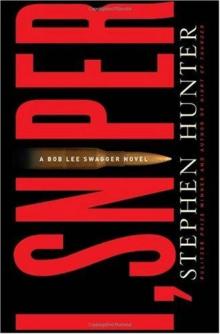 I, Sniper
I, Sniper Havana
Havana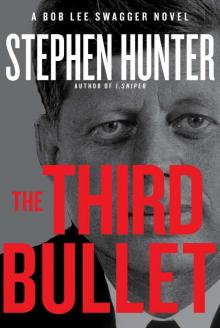 The Third Bullet
The Third Bullet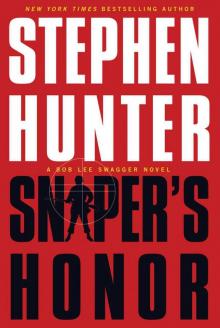 Sniper's Honor: A Bob Lee Swagger Novel
Sniper's Honor: A Bob Lee Swagger Novel Dirty White Boys
Dirty White Boys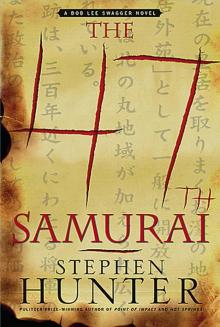 The 47th Samurai
The 47th Samurai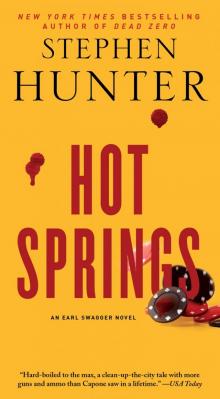 Hot Springs
Hot Springs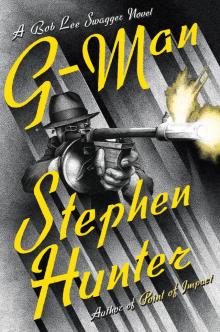 G-Man
G-Man Black Light
Black Light Time to Hunt
Time to Hunt The Day Before Midnight
The Day Before Midnight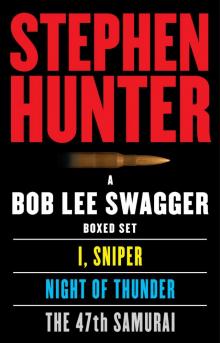 A Bob Lee Swagger Boxed Set
A Bob Lee Swagger Boxed Set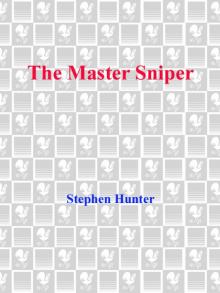 The Master Sniper
The Master Sniper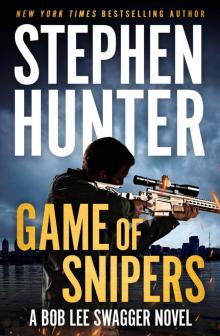 Game of Snipers
Game of Snipers Tapestry of Spies
Tapestry of Spies Citadel
Citadel The Second Saladin
The Second Saladin Stephen Longacre's Greatest Match
Stephen Longacre's Greatest Match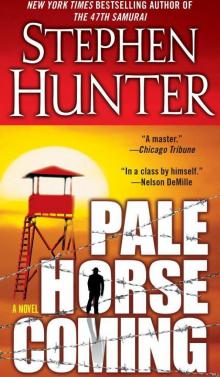 Pale Horse Coming
Pale Horse Coming Soft Target
Soft Target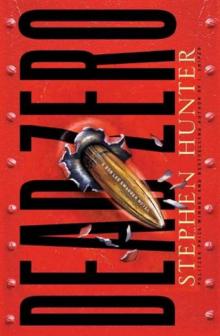 Dead Zero
Dead Zero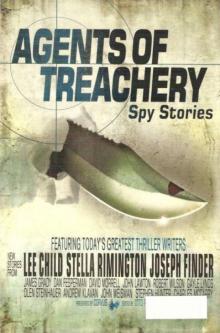 Casey at the Bat
Casey at the Bat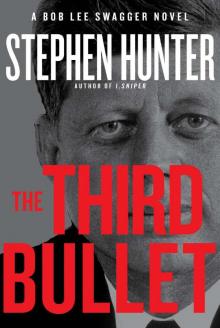 The Third Bullet bls-8
The Third Bullet bls-8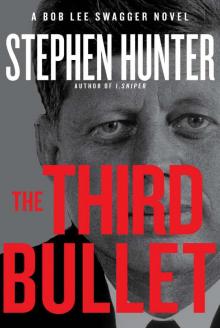 The Third Bullet: A Bob Lee Swagger Novel
The Third Bullet: A Bob Lee Swagger Novel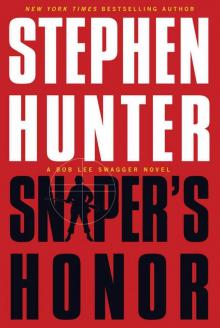 Sniper's Honor
Sniper's Honor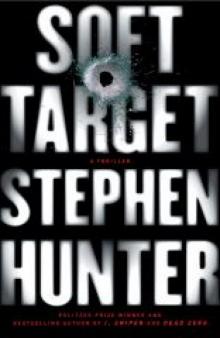 Soft target rc-1
Soft target rc-1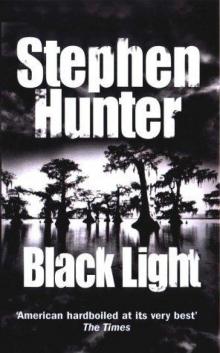 Black Light bls-2
Black Light bls-2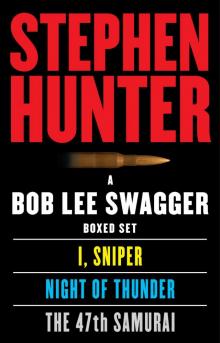 A Bob Lee Swagger eBook Boxed Set: I, Sniper, Night of Thunder, 47th Samurai
A Bob Lee Swagger eBook Boxed Set: I, Sniper, Night of Thunder, 47th Samurai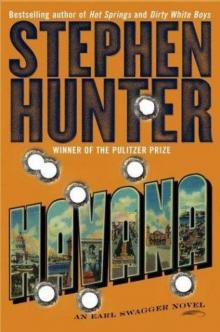 Havana es-3
Havana es-3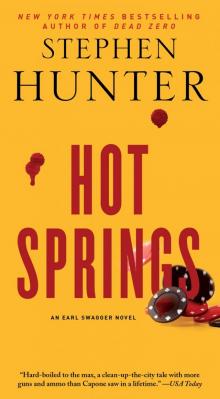 Hot Springs (Earl Swagger)
Hot Springs (Earl Swagger)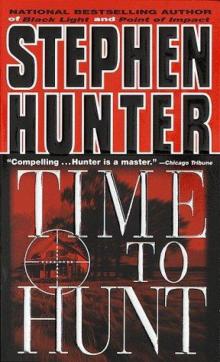 Time to Hunt bls-1
Time to Hunt bls-1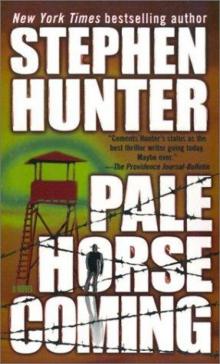 Pale Horse Coming es-2
Pale Horse Coming es-2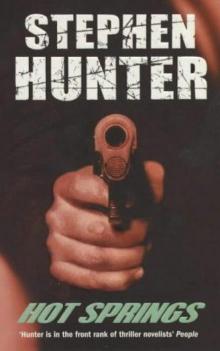 Hot Springs es-1
Hot Springs es-1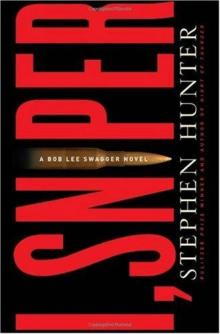 I, Sniper: A Bob Lee Swagger Novel
I, Sniper: A Bob Lee Swagger Novel